In Ethiopia, a country of diverse traditions and landscapes, the variety of homes reflects a fascinating blend of old and new. The vibrant culture and its deep roots find expression in the way people build and inhabit their homes, ranging from the iconic thatched-roof huts known as tukuls, to contemporary urban buildings.
While rural settings boast homes crafted from locally sourced materials like mud and wood, urban areas feature a mixture of apartment blocks and standalone houses. The rapid urbanization witnessed in cities like Addis Ababa is pushing the boundaries of traditional housing concepts, introducing new challenges and opportunities in the housing sector.
Understanding the dynamics of housing in Ethiopia not only provides insight into the living standards and cultural priorities but also unveils potential career paths in architecture, urban planning, and community development. It's a nation where ancient building practices coexist with futuristic designs, showing promise for those looking to contribute to its evolving skyline.
- Traditional Housing Styles
- Modern Urban Dwellings
- Affordable Housing Initiatives
- Career Opportunities in Housing
Traditional Housing Styles
In the rich tapestry of Ethiopia's cultural heritage, traditional housing styles stand as a vivid testament to the creativity and resourcefulness of its people. One of the most iconic forms of Ethiopian dwellings is the tukul. This round, thatched-roof hut, primarily constructed from local materials like mud, wood, and straw, has been a staple of rural architecture for centuries. The design is not merely aesthetic; it serves practical purposes, tailored to the country's diverse climates and landscapes. The circular shape helps in withstanding strong winds, and the thick walls provide insulation against both the hot sun and cooler nights.
Interestingly, the construction of tukuls is a communal activity, often bringing together neighbors and relatives in a display of cooperation and social bonding. Such homes are typically organized in clusters, creating village layouts that foster strong community ties. Within the tukul, the layout is simple yet functional, often featuring a centrally located hearth that doubles as a source of warmth and a place for cooking. The thatched roof, meanwhile, is artfully designed to channel rainwater away, ensuring a dry interior even during heavy downpours.
Beyond tukuls, Ethiopia is home to other unique traditional housing styles influenced by regional cultures and climates. In the highland regions, stone houses with steeply sloped roofs are common, reflecting the influence of both medieval architecture and the need for thermal efficiency in colder climates. By contrast, in the more arid lowlands, homes might be crafted from a blend of mud and thatch, reflecting centuries of adaptation to a hotter, drier environment.
This blend of practicality and artistry is evident across the country. Traditional Ethiopian housing not only offers shelter but also embodies the social and environmental consciousness of its builders. According to an article from the Ethiopian Architectural Journal, "Traditional houses are more than just dwellings; they are reflections of our connection to the land and each other. They emphasize the significance of sustainable living and community integration."
- Ethiopian Architectural Journal
The variation in housing styles also signifies the broad spectrum of Ethiopia’s ethnic diversity, with each group bringing its own customs and construction techniques. For instance, the pastoralist communities in the Omo Valley construct mobile huts suited to their nomadic lifestyle. These huts can be easily dismantled and transported as the communities move in search of grazing lands for their livestock.
This respect and integration of traditional knowledge in housing are witnessing a revival, as modern architects look to these age-old methods to create sustainable and eco-friendly buildings. Traditional housing styles not only echo the wisdom of past generations but also inspire contemporary solutions in urban planning, offering great insights into evolving career opportunities in housing development and architectural preservation.
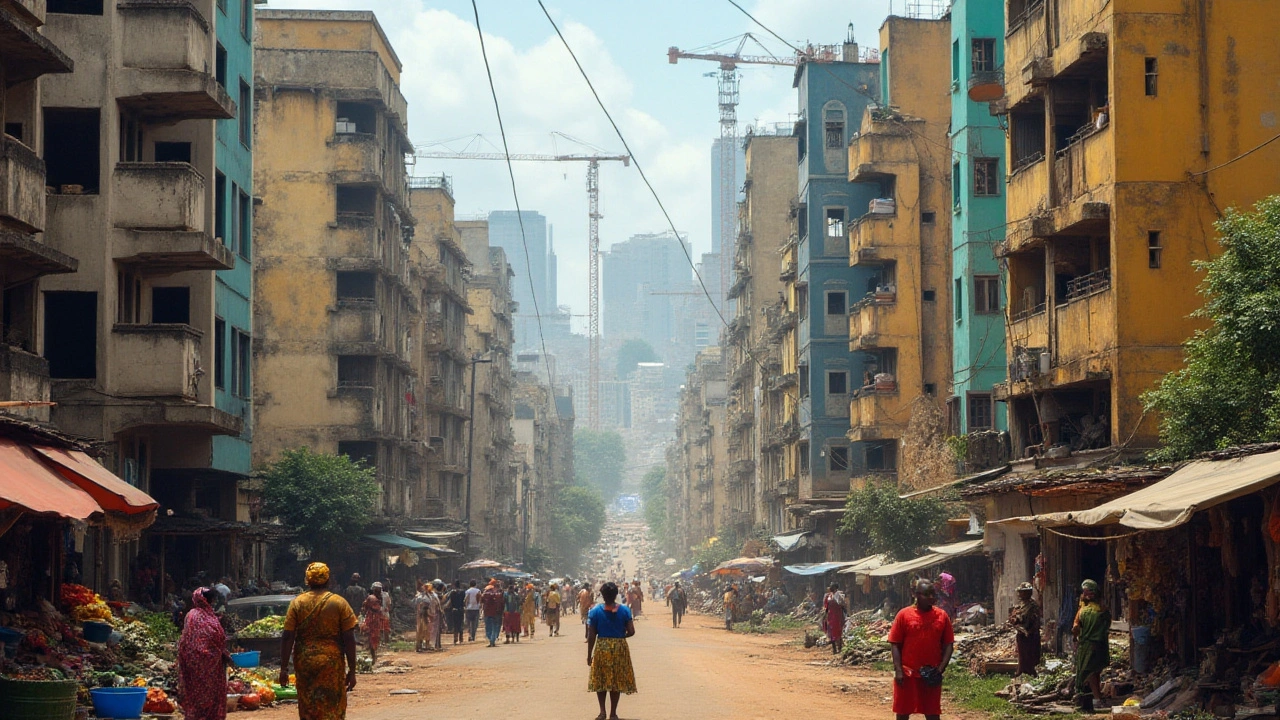
Modern Urban Dwellings
As Ethiopia undergoes a significant transformation, the landscape of its urban housing is shifting rapidly. Cities like Addis Ababa, Dire Dawa, and Mekelle are burgeoning with new constructions that reflect a blend of innovative design and practical functionality. The focus on urban dwellings is largely driven by a growing middle class and the influx of global investments that are reshaping the skyline. High-rise condominiums are increasingly becoming a familiar sight, constructed to maximize space and cater to the housing demands of the urban populace. These structures often integrate modern amenities such as elevators, parking garages, and communal spaces to meet the expectations of a more cosmopolitan lifestyle.
The Ethiopian government's commitment to the growth of urban infrastructure is evident through projects like the Housing Development Program, which aims to provide affordable options through financial assistance and incentivized constructions. In the heart of these urban areas, residential complexes are not just about living quarters; they become communities in themselves, fostering social interaction through shared facilities such as playgrounds, gyms, and multi-purpose halls. This shift towards community-centric living spaces signifies a departure from traditional practices where familial and geographically clustered living was the norm.
However, this evolution is not without challenges. The rapid urban growth is accompanied by concerns over sustainability, maintaining green spaces, and ensuring adequate public services like water, electricity, and waste management. In a statement by urban planner Mekdes Ayalew, she emphasizes, "Our challenge lies in creating cities where sustainability is intertwined with growth, and development is inclusive."
The goal is to not only provide housing solutions but to craft urban centers where economic and social fabric are strengthened, creating harmony in living," Mekdes highlights, expressing the broader vision for Ethiopia's urban future.
The housing in Ethiopia has thus become a vital area for career exploration, with opportunities in sectors such as sustainable architecture, urban planning, and environmental management. The unique conditions in Ethiopia, which necessitate resilience to both climate-related adversities and infrastructural limitations, encourage innovation in building practices. As cities press onward with their ambitious growth strategies, the demand for skilled professionals to lead and implement these projects increases.
For anyone interested in contributing to the modern Ethiopian urban landscape, understanding current trends and challenges is essential. Aspiring professionals must consider not just the aesthetics and functionality of housing but also the cultural nuances and lifestyle shifts that these developments cater to. Ultimately, building homes and communities in Ethiopia today requires a robust blend of respect for tradition and an eye towards a thriving future.
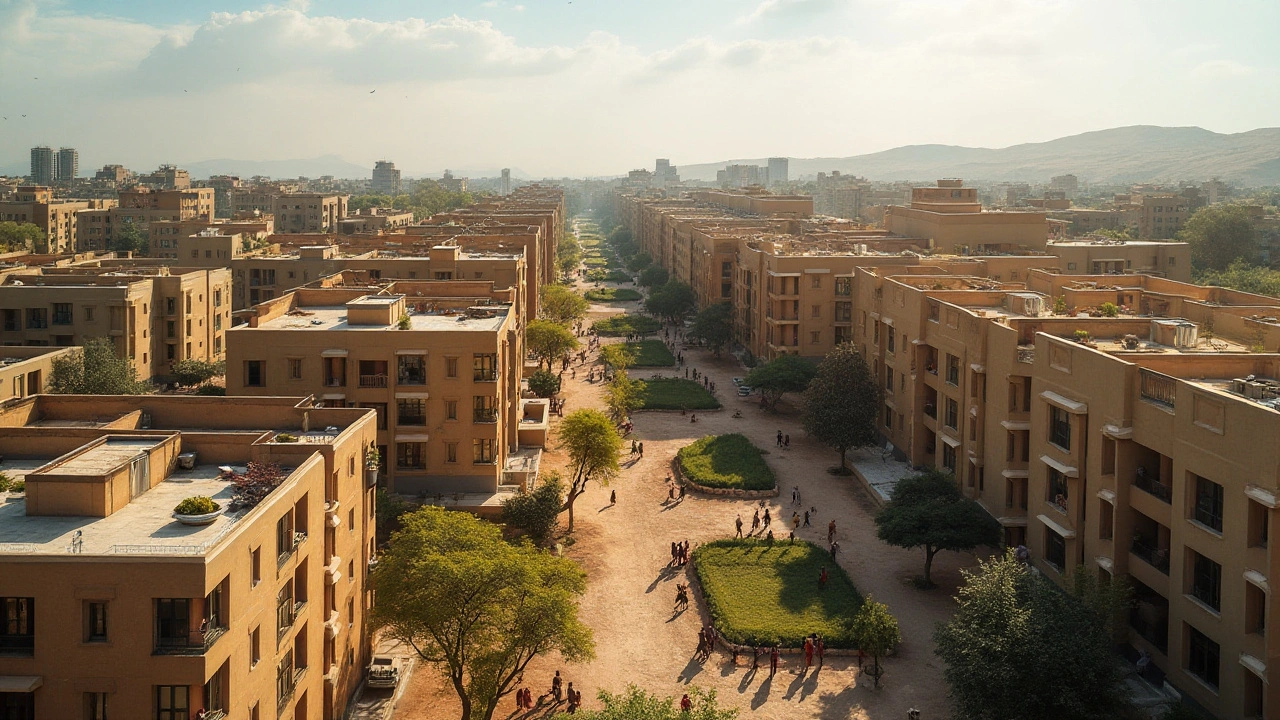
Affordable Housing Initiatives
In the rapidly expanding urban centers of Ethiopia, affordable housing has become a pressing issue that requires immediate attention. With Addis Ababa leading the charge, efforts to address housing shortages have brought both challenges and innovative solutions. The Ethiopian government's commitment to improving urban living conditions has spurred collaborations with both international entities and local construction firms, working together to provide sustainable and cost-effective housing solutions. One prominent initiative is the Integrated Housing Development Program (IHDP), launched to construct thousands of residential units, designed to be accessible to middle and low income residents.
The IHDP aims not only to provide shelter but also to integrate essential services such as schools, healthcare facilities, and shopping centers within these housing projects, making them livable communities. This comprehensive approach ensures that residents benefit from a well-rounded urban habitat, a step up from the often fragmented development seen in the past. Almost 400,000 housing units have been built under this initiative, reflecting a tangible impact. A significant challenge remains, however, in ensuring fair and transparent distribution of these homes to the people who need them the most. Ensuring the housing in Ethiopia meets the needs of its burgeoning population is not just a logistical issue but a matter of equity and justice.
The role of foreign investment in these initiatives cannot be overstated. The World Bank, for instance, has provided substantial funding aimed at strengthening and expanding these housing efforts. A recent report highlighted that by 2035, Ethiopia's urban population could reach over 45 million, necessitating a drastic scale-up in housing provisions. This creates a fertile ground for career opportunities in sectors such as construction management, real estate, and urban planning. There's a growing demand for skilled professionals to innovate and implement the strategies required to accommodate this urban explosion.
Within these frameworks, the importance of sustainable and environmentally friendly building practices is gaining attention. Projects are increasingly seeking to utilize eco-friendly materials and energy-efficient designs to meet global standards for sustainable development. Local architects and engineers are rising to the occasion, marrying traditional Ethiopian design elements with modern technologies. This not only preserves cultural integrity but also enhances structural resilience, combating challenges such as water scarcity and erratic weather patterns.
Community Involvement and Impact
The success of affordable housing initiatives is also closely tied to community involvement. Local communities are encouraged to participate in the design and execution of these projects, to voice their needs and preferences. This grassroots approach has been instrumental in developing housing solutions that resonate with residents, ensuring longevity and satisfaction.The African Development Bank notes, "Ethiopia's focus on inclusive and sustainable urban development sets a precedent for the rest of Africa, opening avenues for dialogue and shared learning."By empowering communities to be stakeholders in these projects, the initiatives foster a sense of ownership and civic responsibility.
The Future of Housing
Looking ahead, Ethiopia's commitment to evolving housing strategies highlights its proactive stance towards urbanization. Continuous assessment and adaptation of these initiatives will be essential in keeping pace with the country's dynamic growth. Strategies must focus on innovation and inclusivity to ensure that housing remains within reach for all citizens. For those seeking to pursue a career in this field, Ethiopia presents a landscape ripe with opportunities to make impactful contributions to society. From designing efficient living spaces to engaging in policy reform, professionals in this sector can play a pivotal role in shaping the future of Ethiopian cities.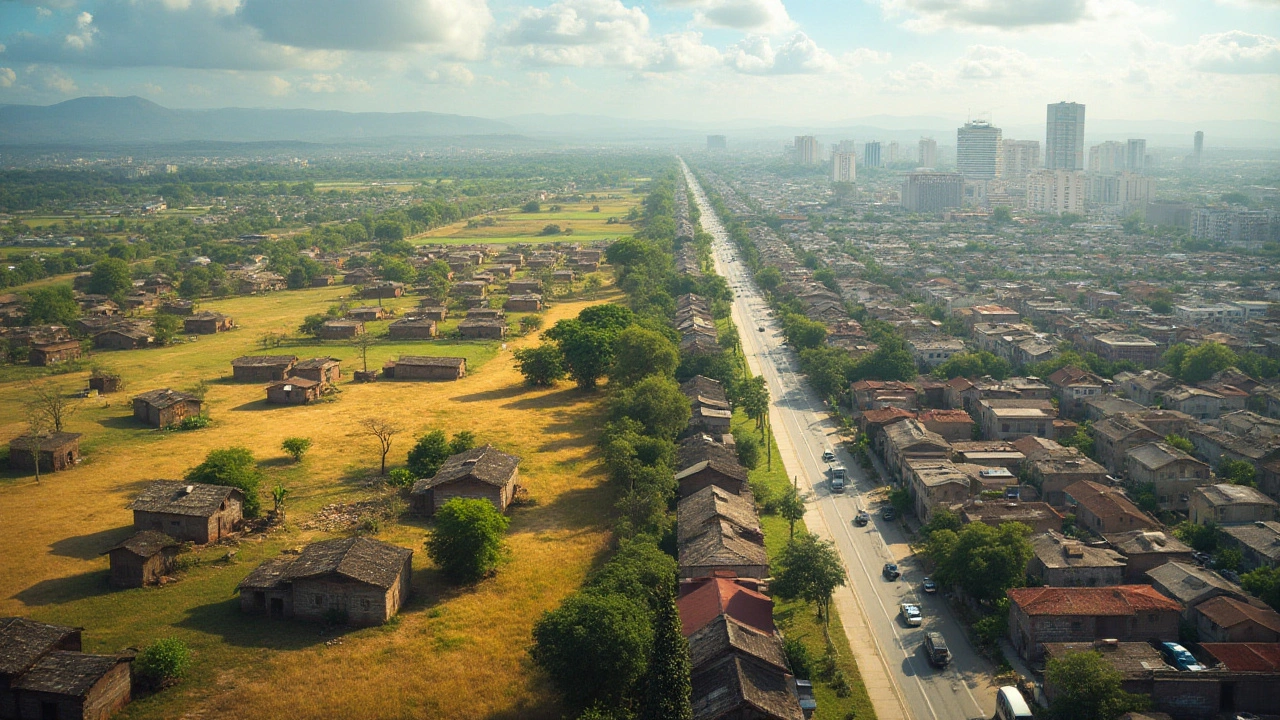
Career Opportunities in Housing
The housing landscape in Ethiopia presents a rich tapestry of opportunities for aspiring professionals. The nation's accelerating economic growth and urbanization are driving unprecedented change in housing demands, offering fertile ground for those with the vision and skill to make a significant impact. From architects reimagining the Ethiopian skyline to urban planners weaving sustainability into the fabric of bustling cities, careers in housing are not just promising but transformative. The development of innovative residential projects, which marry sustainable practices with cultural sensibility, appeals greatly to today's professionals keen on making a difference. These projects require diverse expertise, spanning the spectrum from construction to project management, and they are becoming increasingly vital as Ethiopia seeks to balance rapid growth with environmental stewardship. Professionals interested in these areas have the opportunity to leave a lasting legacy.
Engineers and project managers find ample opportunities in Ethiopia's evolving construction sector. With the government launching numerous initiatives to boost affordable housing, experts in efficient building technologies and resource management become pivotal. These roles not only contribute to shaping modern Ethiopian cities but also play a crucial part in solving housing accessibility challenges. The government's commitment to tackling urban sprawl is evident in its investments in high-rise apartments and mass housing projects, which aim to accommodate the burgeoning urban population without compromising on living standards. Here lies a chance for engineers to engage in projects that combine sustainable materials with innovative designs, addressing both aesthetic and functional aspects of urban life. According to the Ethiopian Institute of Architecture, Building Construction, and City Development, there is a growing need for skilled professionals capable of leading these groundbreaking efforts.
The realm of real estate and property management is yet another avenue witnessing significant growth. Entrepreneurs in this field have an opportunity to tap into the housing sector's expansion, offering services that range from developing residential clusters to managing rental properties. With the country's economic stability improving and a burgeoning middle class, there is an increased interest in quality housing options. Real estate experts who can navigate the legalities, secure viable land deals, and market housing projects effectively are in high demand. A tackle into property management might require a sophisticated understanding of tenant relationships, maintenance logistics, and sustainable practices—areas that are becoming more pronounced as Ethiopia pivots towards modern residential infrastructure.
"Having a deep understanding of cultural dynamics and a passion for sustainability was instrumental in our approach to crafting homes that people cherish," says Aklilu Tadesse, a renowned Ethiopian architect noted for his work on eco-friendly urban housing projects.
Moreover, the focus on renewable energy integration in housing has given rise to new prospects for energy specialists. Homes that were once reliant on non-renewable sources are now slowly transitioning to solar and other sustainable options, fabricating a need for experts who can seamlessly incorporate renewable tech into Ethiopian homes. This shift is particularly vital in the modern urban dwellings emerging in the expanding cities. Integrated solar systems, rainwater harvesting solutions, and energy-efficient building materials are not just catchphrases but realities that industry leaders are pursuing. The Government's push towards green growth encapsulates the urgency of these roles, emphasizing the importance of sustainable housing solutions tailored to the unique Ethiopian landscape. The availability of government grants for sustainable housing projects presents an exciting opportunity for professionals willing to engage in this transformation.

 How Long Can a Foreigner Stay in Ethiopia: Visa Information and Travel Tips
How Long Can a Foreigner Stay in Ethiopia: Visa Information and Travel Tips
 Understanding the Average Monthly Income in Ethiopia
Understanding the Average Monthly Income in Ethiopia
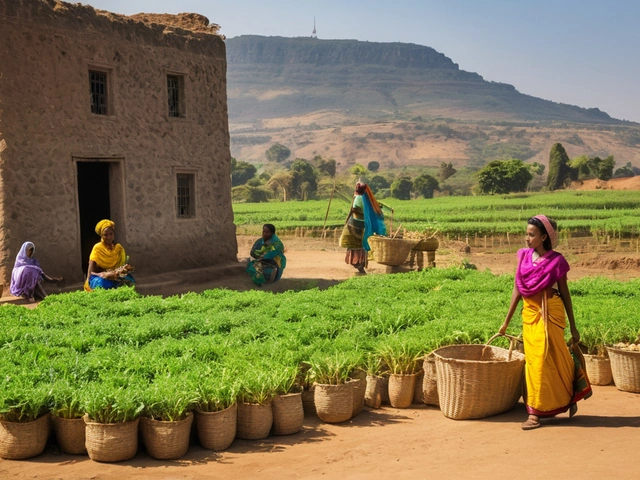 Ethiopian Jobs: Exploring Livelihoods in Ethiopia
Ethiopian Jobs: Exploring Livelihoods in Ethiopia
 Earn Money Online by Watching Videos in Ethiopia: An Expert Guide
Earn Money Online by Watching Videos in Ethiopia: An Expert Guide
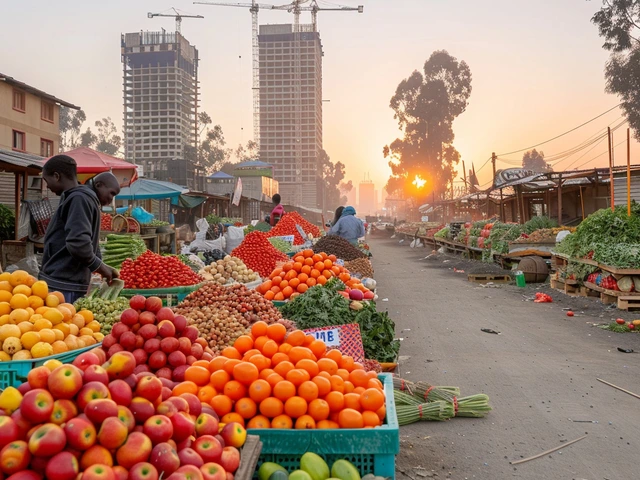 Exploring the Safety of Living in Ethiopia: Insights and Tips
Exploring the Safety of Living in Ethiopia: Insights and Tips
randy mcgrath
October 8, 2024 AT 17:47It's fascinating how the tukul embodies both cultural identity and practical ingenuity. The circular shape, thatched roof, and communal building process reflect a deep connection to the land. Modern architects could learn a lot from that synergy of form and function. Balancing tradition with contemporary needs seems like a worthwhile pursuit.
Frankie Mobley
October 15, 2024 AT 16:27Tukuls are built using locally sourced mud, wood, and straw, which keeps costs low and materials sustainable. The thick walls store heat during the day and release it at night, making them naturally temperature‑regulated. This method also reduces reliance on imported building supplies.
ashli john
October 22, 2024 AT 15:07Urban housing growth in Addis is reshaping the skyline fast.
Kim Chase
October 29, 2024 AT 12:47i think the new high‑rise blocks are cool but they also force a lot of people into tight spaces.
David Werner
November 5, 2024 AT 11:27What most folks don’t realize is that these sleek towers are part of a larger agenda controlled by unseen interests. The government and foreign investors quietly push for rapid construction to funnel money into offshore accounts. Meanwhile, the promised amenities often never materialize, leaving residents with cramped apartments and broken promises. The lack of green spaces isn’t an oversight; it’s a deliberate move to keep the populace focused on work rather than protest. Every concrete slab hides a contract that benefits a handful of elite financiers. In the end, the “modernization” narrative masks a systematic extraction of wealth from ordinary Ethiopians.
Paul KEIL
November 12, 2024 AT 10:07The current housing paradigm in Ethiopia epitomizes a confluence of macro‑urbanization vectors and micro‑spatial optimization, thereby necessitating a paradigm shift towards integrative densification frameworks.
Horace Wormely
November 19, 2024 AT 08:47The sentence would read more clearly as: “Ethiopia’s housing paradigm combines macro‑urbanization trends with micro‑spatial optimization, requiring a shift toward integrative densification frameworks.”
christine mae cotejo
November 26, 2024 AT 07:27Affordable housing in Ethiopia has emerged as a crucible where policy ambition, international financing, and grassroots participation intersect, forging a complex tapestry that demands nuanced understanding. The Integrated Housing Development Program, launched with the intent of delivering thousands of homes, illustrates how governmental vision can be both a catalyst for progress and a source of bureaucratic inertia. While the construction of nearly four hundred thousand units stands as a testament to logistical capability, the distribution mechanisms remain fraught with opacity, often leaving the most vulnerable populations in limbo. Moreover, the infusion of World Bank capital injects much‑needed resources but simultaneously imposes stringent compliance standards that may not align perfectly with local building traditions. This tension between global best practices and indigenous methods creates a fertile ground for innovative hybrid designs, yet also raises concerns about cultural erosion. Community engagement has been championed as a cornerstone of the program, encouraging residents to voice preferences, which in theory should enhance satisfaction and durability. However, real‑world implementation frequently reveals gaps between consultation and execution, as top‑down decisions can override local inputs. The sustainability dimension adds another layer, pushing developers toward eco‑friendly materials and energy‑efficient designs, which promises long‑term cost savings but also introduces higher upfront costs. In the context of Ethiopia’s rapidly expanding urban populace, projected to exceed 45 million by 2035, scaling these initiatives without compromising quality becomes an existential challenge. Architects and engineers are called upon to reconcile the delicate balance between affordability, resilience, and aesthetic integrity, a triad that has historically been difficult to achieve simultaneously. The private sector sees a lucrative opportunity in this arena, yet must navigate regulatory frameworks that are still evolving in response to the nation’s unique demographic pressures. Educational institutions are increasingly offering specialized curricula to prepare the next generation of housing professionals, underscoring the sector’s rising prominence. Parallel to these developments, non‑governmental organizations continue to advocate for transparent allocation processes, emphasizing equity as a fundamental right. As the housing landscape transforms, monitoring mechanisms must be strengthened to ensure that projected benefits translate into lived realities for citizens across socioeconomic strata. Ultimately, the success of Ethiopia’s affordable housing agenda will hinge on the synergistic collaboration of policymakers, financiers, builders, and the communities they aim to serve, forging a model that could inspire similar endeavors across the continent.
Douglas Gnesda
December 3, 2024 AT 06:07The deployment of mixed‑use zoning within these projects can further amplify socioeconomic integration, fostering vibrant micro‑economies that reduce reliance on distant commute hubs; such spatial interlinkage not only optimizes land use efficiency but also cultivates resilient community networks.
Abhijit Pimpale
December 10, 2024 AT 04:47The program’s success metrics appear overly optimistic given the current allocation bottlenecks.
Eric DE FONDAUMIERE
December 17, 2024 AT 03:27Wow this is really exciting! Seeing so many new homes going up means jobs, better living, and a brighter future for everyone! Let’s keep the momentum going!!
Pauline Herrin
December 24, 2024 AT 02:07While enthusiasm is commendable, it is imperative to assess whether the rapid construction adheres to structural standards and long‑term sustainability.
pradeep kumar
December 31, 2024 AT 00:47Many of these projects overlook the actual needs of low‑income families.
love monster
January 6, 2025 AT 23:27Addressing need‑based allocation requires a data‑driven approach, integrating socioeconomic indicators to prioritize the most vulnerable households.
Christian Barthelt
January 13, 2025 AT 22:07Contrary to popular belief, high‑rise developments do not inherently solve housing shortages; they often shift the problem elsewhere.
Ify Okocha
January 20, 2025 AT 20:47The focus on vertical expansion merely masks the systemic issue of land scarcity and ineffective urban planning policies.
William Anderson
January 27, 2025 AT 19:27Honestly, the whole initiative feels like a half‑baked promise that will crumble under its own weight.
Sherri Gassaway
February 3, 2025 AT 18:07One might argue that such grand schemes echo humanity’s perpetual quest for permanence amidst impermanence.
Milo Cado
February 10, 2025 AT 16:47Despite the challenges, Ethiopia’s housing sector is poised for innovative growth, and collaborative effort will surely pave the way for sustainable communities 😊